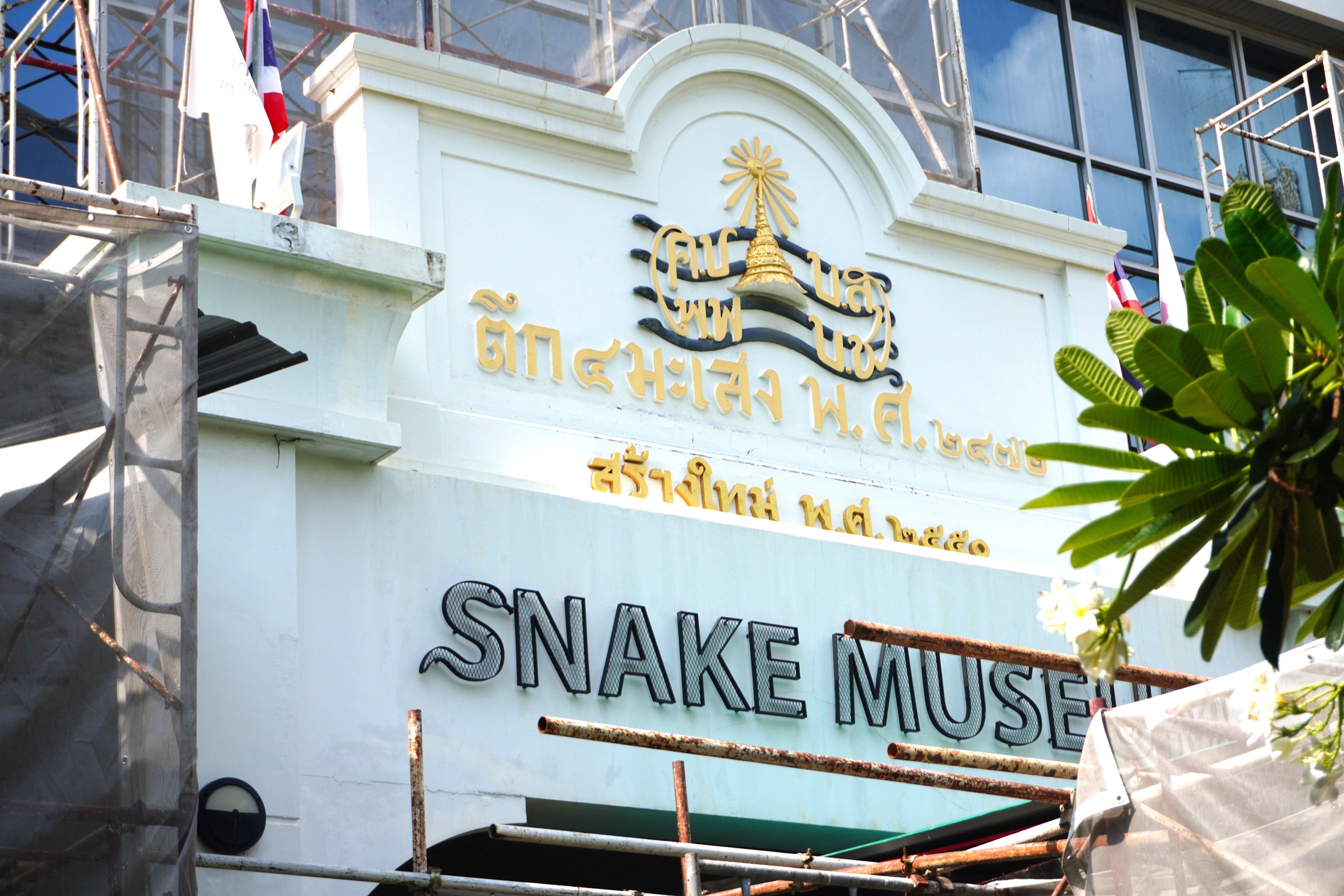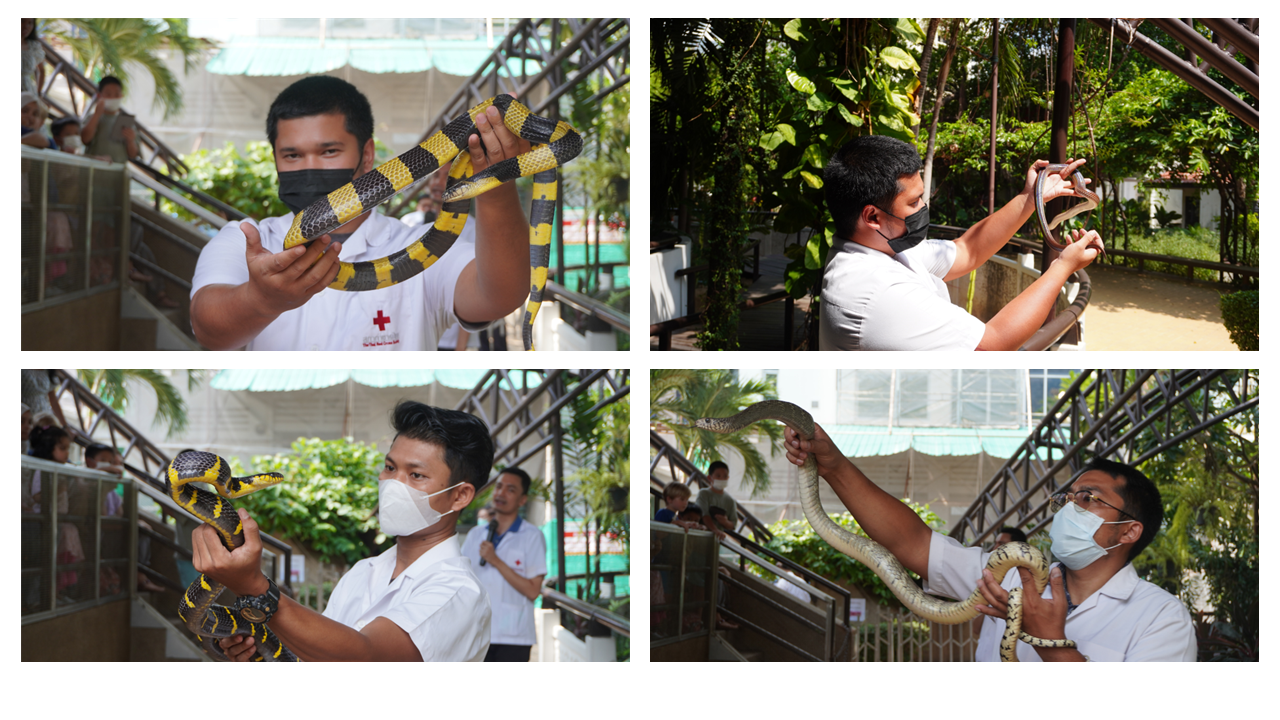In Thailand's lush tropical landscape, diverse snake species coexist with humans, including many that are non-venomous and some that are venomous. With 10,000 snakebite cases seen every year, finding a comprehensive solution is crucial. The Queen Saovabha Memorial Institute (QSMI), known as the Snake Farm in Bangkok, exemplifies integrating science, education, and public health, providing an innovative response to Thailand’s snakebite challenge. Imported antivenoms proved ineffective against the region’s unique snake species, prompting the development of locally produced antivenom using venom from indigenous snakes. QSMI’s establishment in 1923, led by Dr. Leopold Robert, marked Thailand’s first centre for antivenom production.

“The Si Maseng Building (translated as the 4 Snakes Building) at QSMI, built-in 1929 by the four 'Snake Zodiac Year' children of King Rama V, stands as a monument of unity and charity. This Building is dedicated to housing venomous creatures and symbolizes their noble initiative. ©WHO 2023
Different snake species have a very different venom composition, requiring specific matching antivenoms for treatment. When a snakebite occurs, hospitals employ meticulous symptom analysis, location examination, and fang mark observation to gather vital information for effective treatment. Because hospitals maintain comprehensive records on the geographical distribution of venomous snakes and adhere to standardized protocols, they can accurately identify the snake species and administer the appropriate antivenom. The primary focus of QSMI's antivenom production efforts lies in addressing the two main categories: haemotoxic and neurotoxic venom, which cause bleeding or paralysis and neurological symptoms.
The Snake Farm at QSMI plays an indispensable role in every stage of antivenom production, strictly adhering to global standards. Serving as a sanctuary for various venomous snakes, including Cobras, Kraits, and Vipers, the farm is responsible for careful venom extraction. At times, QSMI also receives venom samples from snakes sourced from different countries, such as Malaysia, Laos, and Cambodia, due to their geographical proximity and similar snake species, to produce the corresponding antivenom.

A diverse display of skilled snake handlers showcasing their expertise, each confidently holding a unique species with utmost care and precision © WHO 2023
As a recognized WHO Collaborating Centre, Snake Farm is globally acclaimed for its contributions to research and education; by adhering to WHO standards, the institute follows the latest global practices, significantly impacting local and regional public health. Their proactive approach towards developing universal antivenom, considering its complexity, reflects the progress of their product development. Furthermore, their collaboration extends beyond snakebite management to include the prevention and treatment of rabies cases, fostering knowledge exchange and cooperation with other countries., The institute also organizes courses in the Southeast Asia Region, equipping participants with essential skills to handle snakes safely and treat snakebites and disseminating knowledge regarding snakebite and rabies management.
.jpg?sfvrsn=c35a9c12_1)
(L-R) Dr Jos Vandelaer, WHO Representative to Thailand, Prof. Visith Sitprija, Director of QSMI, and Dr Richard Brown, Programme Manager Health Emergencies and AMR at WHO Thailand, in front of the WHO Collaborating Centre for Venomous Snake Toxicology and Research at QSMI © WHO 2023
Beyond its scientific endeavours, QSMI also leverages its unique position to educate the public about snakes. Through interactive exhibitions and live demonstrations, the Snake Farm is a dynamic learning platform for locals and tourists. It fosters an understanding of snake behaviour and their critical role within the ecosystem. The institute also offers practical advice on snakebite prevention and first aid, vital in educating rural communities where snake encounters are more prevalent.

Immersing in the snake museum at QSMI, gaining insights on first-aid procedures and snakebite management strategies © WHO 2023
The impact of global warming on snake relocation patterns cannot be ignored. Reptiles, unable to regulate body heat, are compelled to seek refuge from rising temperatures. Reports indicate that snakes in the United States, particularly in Arizona, have been migrating further north to cooler regions. Similarly, in Thailand, the effects of global warming have led to an increased presence of snakes seeking shelter within homes, where cooler temperatures and a more abundant food supply can be found. In addition, the incidence of snakebites also increases when floods occur, and we know these events are also part of a pattern of increasing extreme weather events linked to climate change. As a result, the Snake Farm emphasizes the importance of snakebite prevention education and disseminating practical advice for rural and urban communities.
The Snake Farm under QSMI is more than an institution; it exemplifies public health innovation. Its strategic blend of dedicated research, adherence to international standards, and public education effectively and holistically addresses the snakebite issue. As we acknowledge its crucial role, it is clear that QSMI's Snake Farm is invaluable in Thailand's ongoing battle against snakebite envenomation.
